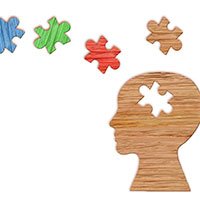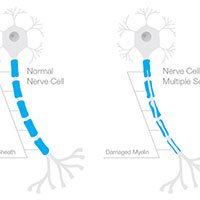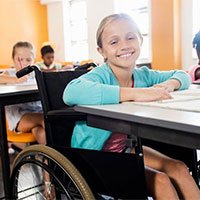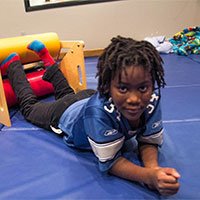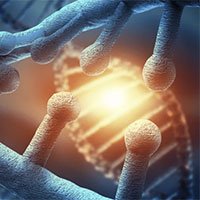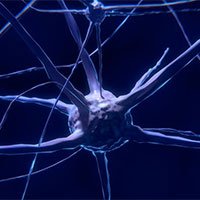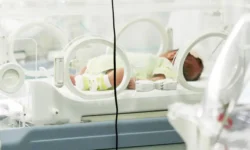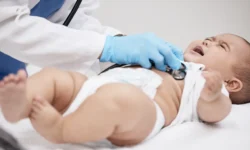When a child is diagnosed with Cerebral Palsy (CP), parents often wonder how the diagnosis will affect their child’s learning. Approximately 30-50% of children with CP do have some form of mental impairment that will affect learning. Others face barriers to learning caused by physical impairments. The good news is that with a supportive environment and the right treatment plan, many children can achieve success learning despite potential cognitive and physical impairments.
This information was compiled from government sources, educational non-profits, and medical experts.
To learn more about how Cerebral Palsy and related conditions may affect learning, keep reading.
Physical Impairments and Learning
Cerebral Palsy is a term used to describe a variety of muscle and movement disorders. As a physical impairment, many children who are diagnosed with CP do not experience any significant cognitive impairment. For those children, the barriers to learning are primarily physical.
CP can affect a child’s mobility, posture, coordination, and overall independence. For these reasons, children with CP may require more supervision and assistance than other children at school.
Children who face severe physical impairments may have more trouble concentrating, communicating, and participating with traditional learning exercises. For example, some children may experience pain due to the stiffness of the muscles in their arms or legs. This pain may spike unpredictably throughout the day. A spike a pain may (understandably) distract the child, making it difficult to complete a lesson.
Physical impairments can also affect a child’s overall sense of wellbeing and happiness.
If a child cannot participate in the same physical activities as other children, or if a child is highly dependent on others for mobility and hygiene, the child may suffer from anxiety, depression, and low self-esteem. These feelings of negative self worth and sadness may also affect a child’s academic performance.
Cognitive Impairments and Learning
Some children who are diagnosed with Cerebral Palsy also experience some form of mental impairment in addition to CP. CP is often caused by a brain injury suffered during labor and delivery. A brain injury may affect more than one area of the brain at the same time, causing damage that leads to multiple different conditions and diagnoses later on.
ADHD and Autism are two co-mitigating factors that appear to sometimes be related to CP. Additionally, if the child has trouble with communication or nutrition, those factors can exaggerate any potential existing cognitive impairments.
The Effect of Cerebral Palsy on Learning
In summary, the physical and mental challenges of Cerebral Palsy can affect a child’s ability to learn. While physical challenges may challenge the child’s ability to participate and stay focused on lessons, children with CP may also face diminished cognitive capabilities.
Regardless of the severity of the CP and whether there are other related conditions that affect the child’s ability to learn, the most important takeaway is that developing a good treatment plan can significantly improve a child’s likeliness to succeed.
The right combination of medicine, surgery, therapy, equipment, and medical supervision will maximize the child’s chances to learn and develop as best as he or she can. Treatment professionals can also help parents understand their child’s capabilities, coach parents on how to set constructive goals, how to deal with the challenges on the road that lies ahead, and offer encouragement during the difficult times.
The important thing is to be proactive and remain positive. There is a huge and supportive community for children and families with Cerebral Palsy. You are not alone.
Resources on Treatment for Cerebral Palsy.
Resources on Community Support for Cerebral Palsy.
Resources on Legal Support for Cerebral Palsy.
Sources
Song, C. (2013). Relationships between Physical and Cognitive Functioning and Activities of Daily Living in Children with Cerebral Palsy. Journal Of Physical Therapy Science, 25(5), 619-622. doi:10.1589/jpts.25.619 https://pmc.ncbi.nlm.nih.gov/articles/PMC3804975/
Hutton, J. (2002). Effects of cognitive, motor, and sensory disabilities on survival in cerebral palsy. Archives Of Disease In Childhood, 86(2), 84-89. doi:10.1136/adc.86.2.84 https://adc.bmj.com/content/86/2/84
Contact a Cerebral Palsy and Birth Injury Attorney
Getting help for a child with a birth injury can make a big difference. Early intervention and early treatment is often key to helping improve a child’s wellbeing. You must act quickly.
If you have questions about whether your child’s birth injury was caused by a preventable medical error, then our attorneys at Brown Trial Firm may be able to help.
Case Review at No Cost or Obligation
If you would like help investigating your child’s birth injury, please contact us. Our birth injury attorneys will be happy to give you a free case evaluation. We can also point you to great non-legal resources that can help you figure out your next steps.
Many birth injuries that cause cerebral palsy could have been prevented. Don’t wait, get help today. Call +1 (866) 393-2611, email us at [email protected], or use the live chat button for 24/7 assistance.
Approximately 30-50% of children with CP do have some form of mental impairment that will affect learning. Others face by physical barriers to learning.
In this article we discuss the factors that can affect the quality of life and the life expectancy of a person with cerebral palsy.
What’s the difference between Cerebral Palsy and Multiple Sclerosis? The conditions may seem similar, but are completely different! Read on to learn more.
In this post, we will cover how Cerebral Palsy may or may not affect a child’s intelligence and how to determine if a child may have intellectual impairments.
An occupational therapist can help people affected by cerebral palsy at all ages and capabilities to live a more fulfilling and independent life.
In this post, we discuss whether Bone Marrow Mononuclear Cells (BMMC) stem cells can be used to treat Cerebral Palsy.
Cord blood banking saves precious stem cells that can save lives and further research toward cures for diseases including birth injuries such as HIE and Cerebral Palsy.
Cerebral Palsy can interfere with the body’s ability to carry out commands coming from the nervous system.
